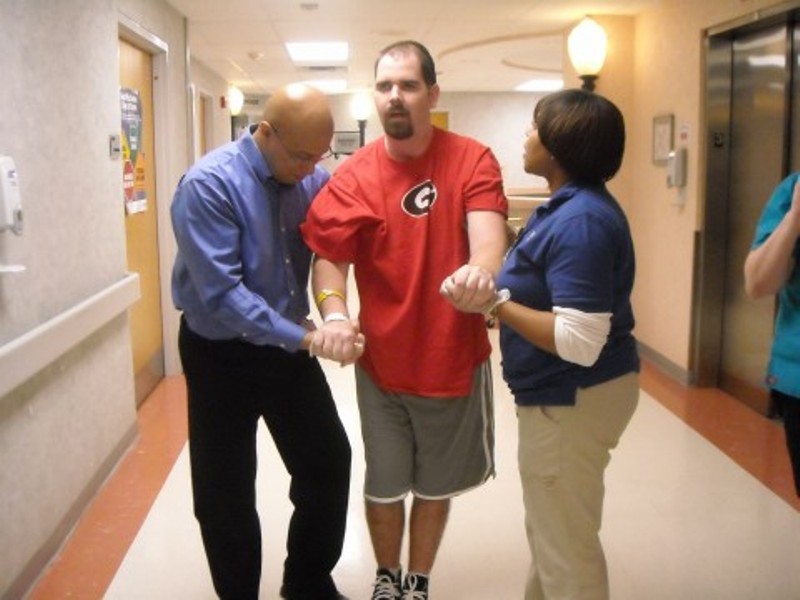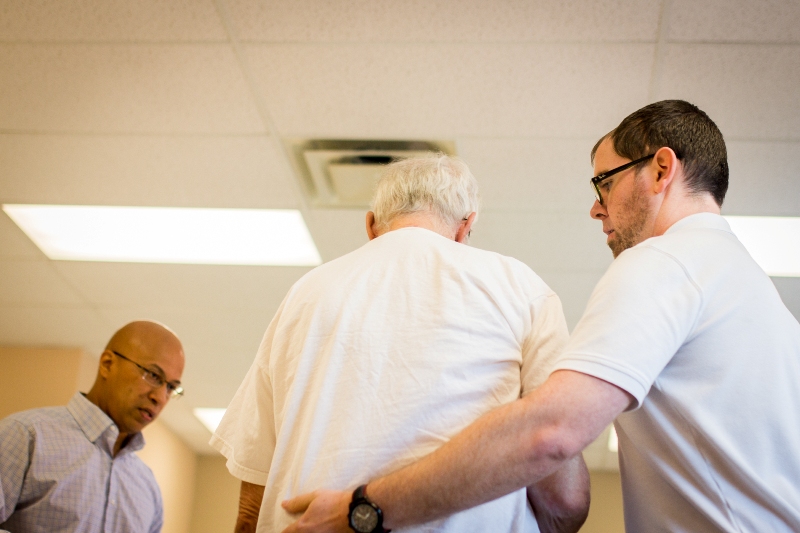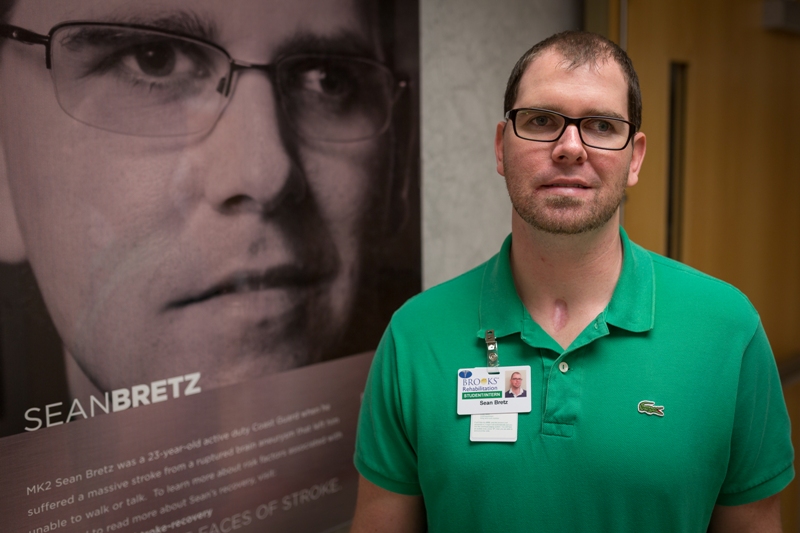Stroke Patient Sean Bretz Comes Full Circle in His Recovery
Patient ExperienceMar 10, 2015
US Coast Guard machinery technician MK2 Sean Bretz woke up with an “excruciating headache”. That’s the last thing he remembers before collapsing on the floor. The 23-year-old had suffered a massive aneurysm that ruptured causing a stroke.
His brain hemorrhage was so severe, that he was placed in a medically-induced coma and underwent a craniectomy to reduce the brain swelling. He woke up 19 days later unable to walk or talk.
 The next year was a blur of surgeries and intensive physical rehabilitation. Sean began speaking again and after two months of therapy, he took his first steps.
The next year was a blur of surgeries and intensive physical rehabilitation. Sean began speaking again and after two months of therapy, he took his first steps.
“Sean is driven by his desire to help others the way that he was helped after his stroke.”
“Sean’s entire treatment team at Brooks were his cheerleaders. When he took his first steps, the whole gym stood up and cheered for him. They say he’s as much an inspiration for them as they are for him,” said Noel Bretz, Sean’s mother.
Despite his progress, Sean spent 15 months in rehab trying to forget what had happened so he could move on. He wanted to go back into the Coast Guard and return to life as it was. But that plan changed. “I have some pretty visible scars and some small deficits that reminded me every day that I couldn’t get away from what happened, so I decided to adapt and use my experience to help others,” Sean said.
A week after finishing his outpatient therapy, Sean started college to become a Physical Therapist Assistant (PTA). Sean is now completing his clinical rotations at Brooks and will graduate just before the 4 year anniversary of his stroke.
 Sean has been working with clinical instructor, Lory Butcher, PTA, since January. “It’s not about how she can help me or I can help her. She is showing me the best way to help the patient, and that’s what it’s all about.”
Sean has been working with clinical instructor, Lory Butcher, PTA, since January. “It’s not about how she can help me or I can help her. She is showing me the best way to help the patient, and that’s what it’s all about.”
“I’m proof that it does get better.”
Lory says, “Sean is driven by his desire to help others the way that he was helped after his stroke. He is very compassionate with patients and can relate directly to their experience, which will be an asset in his future career.”
Sean also had the opportunity to spend a couple of days under the supervision of Michael Greene, the PTA who helped him through his rehab. “Sean is a great example that life goes on after a stroke. The thing I’m most proud of is watching him do this on his own. He wants to learn to be the best therapist he can be,” said Greene.
 Sean’s photo hangs outside of the therapy gym on the stroke floor. The picture honors Sean as a stroke survivor. It reminds him of a very different time.
Sean’s photo hangs outside of the therapy gym on the stroke floor. The picture honors Sean as a stroke survivor. It reminds him of a very different time.
“I look at it [a lot]. I think it shows patients that I really can relate to them. I tell them to keep working, stay positive. I’m proof that it does get better.”
